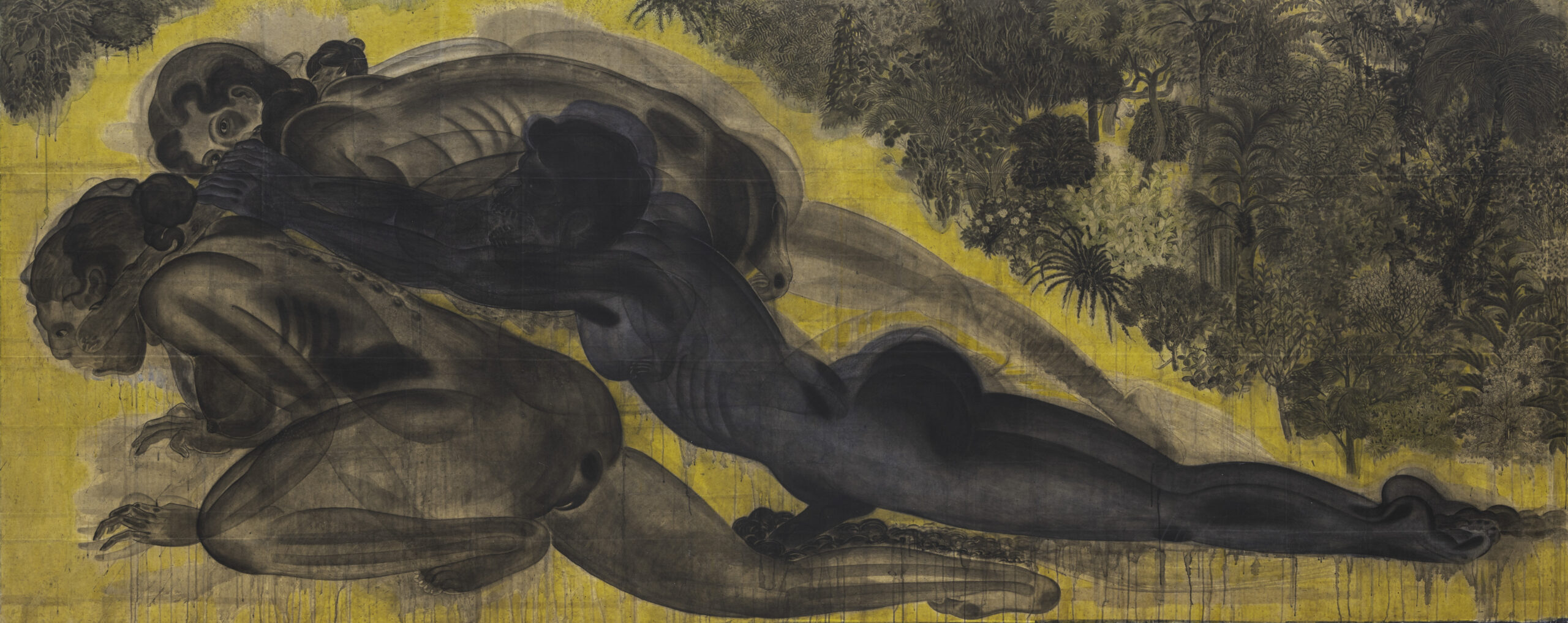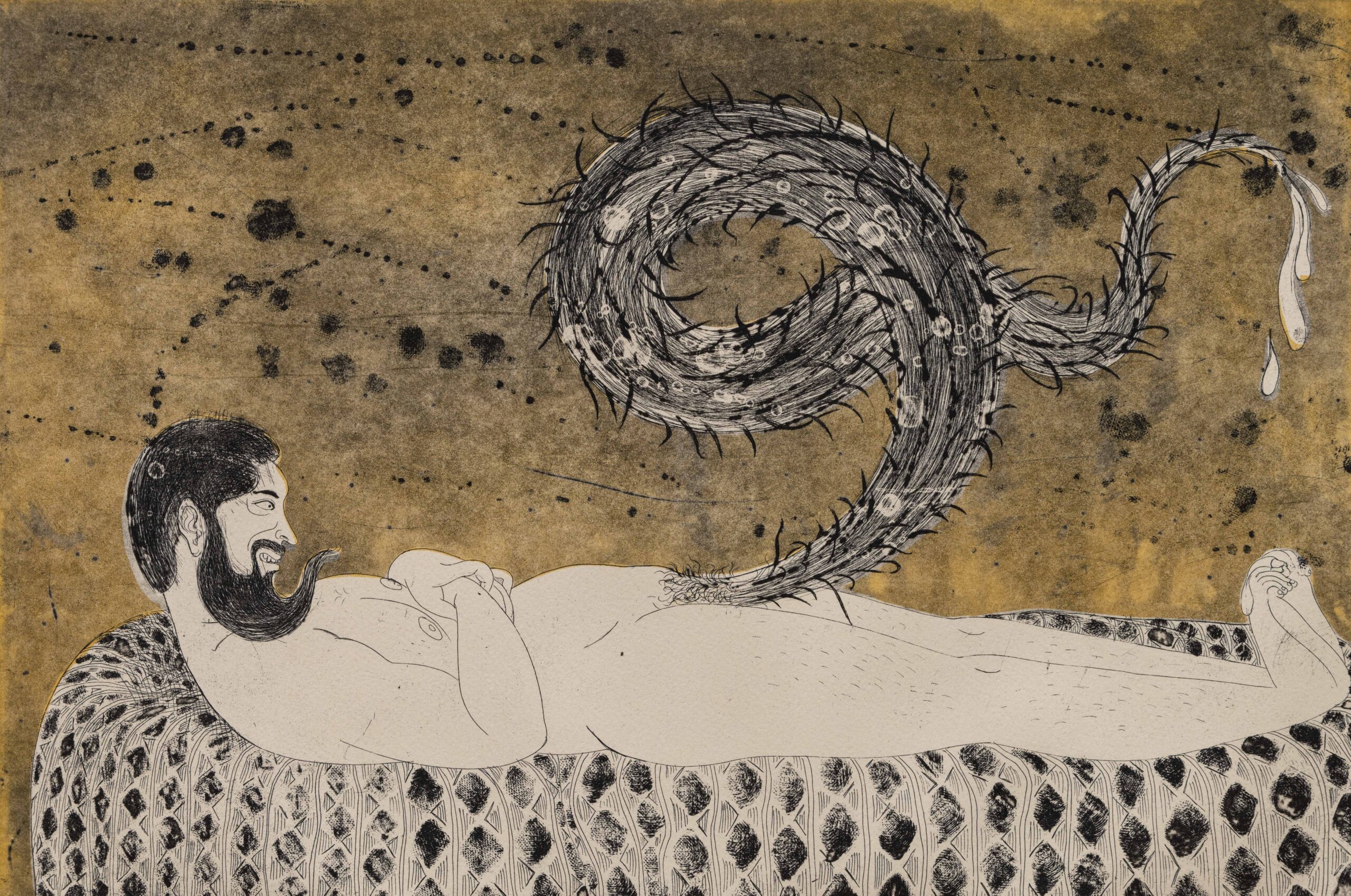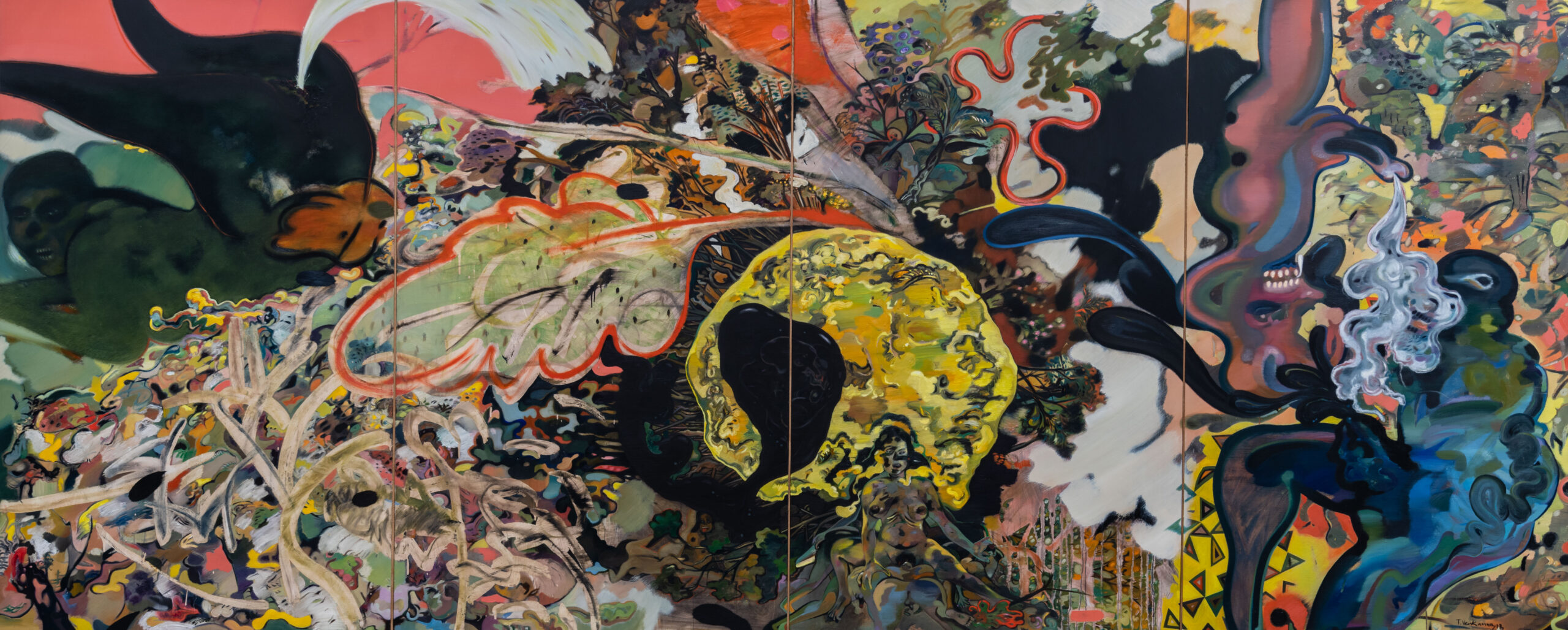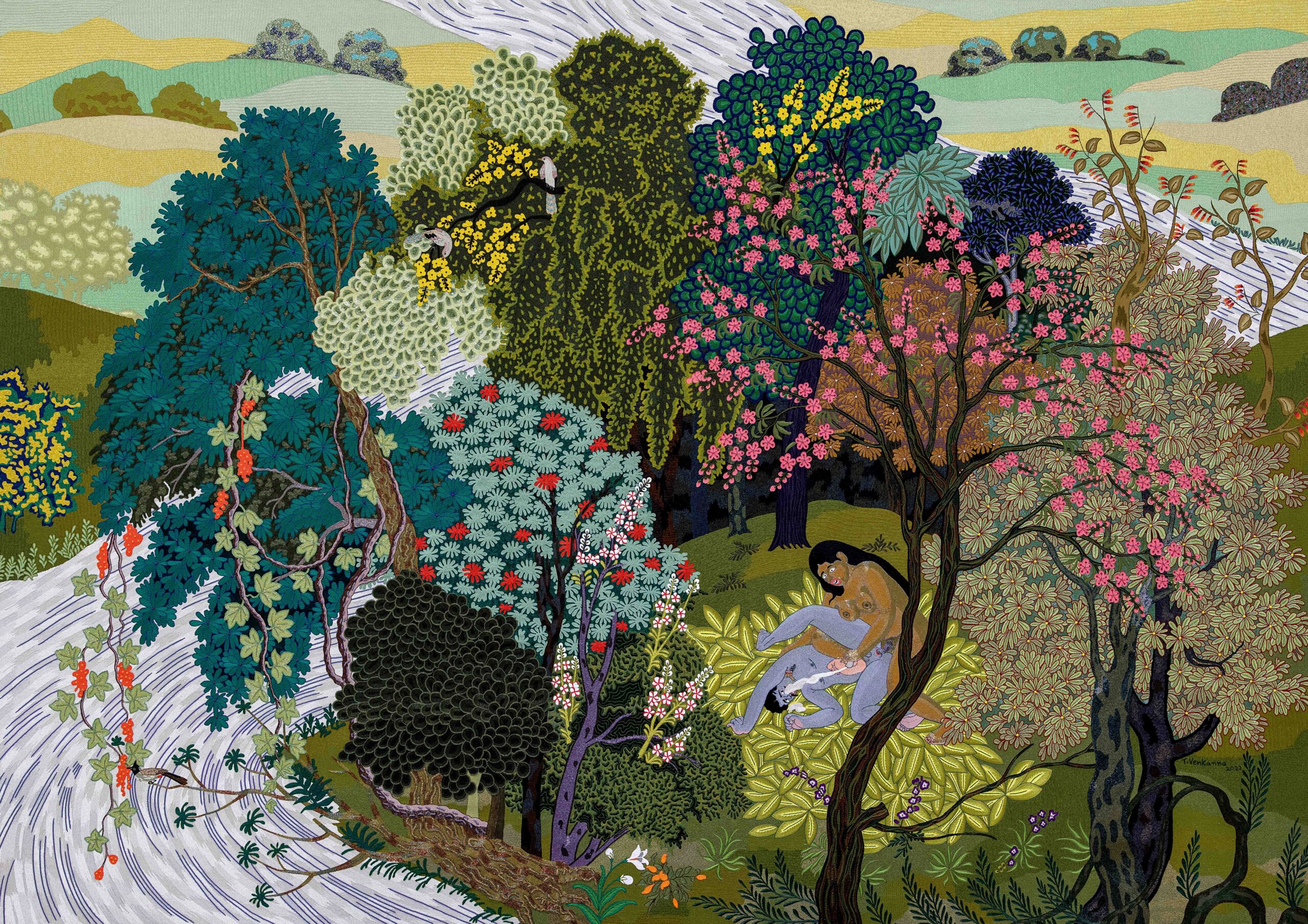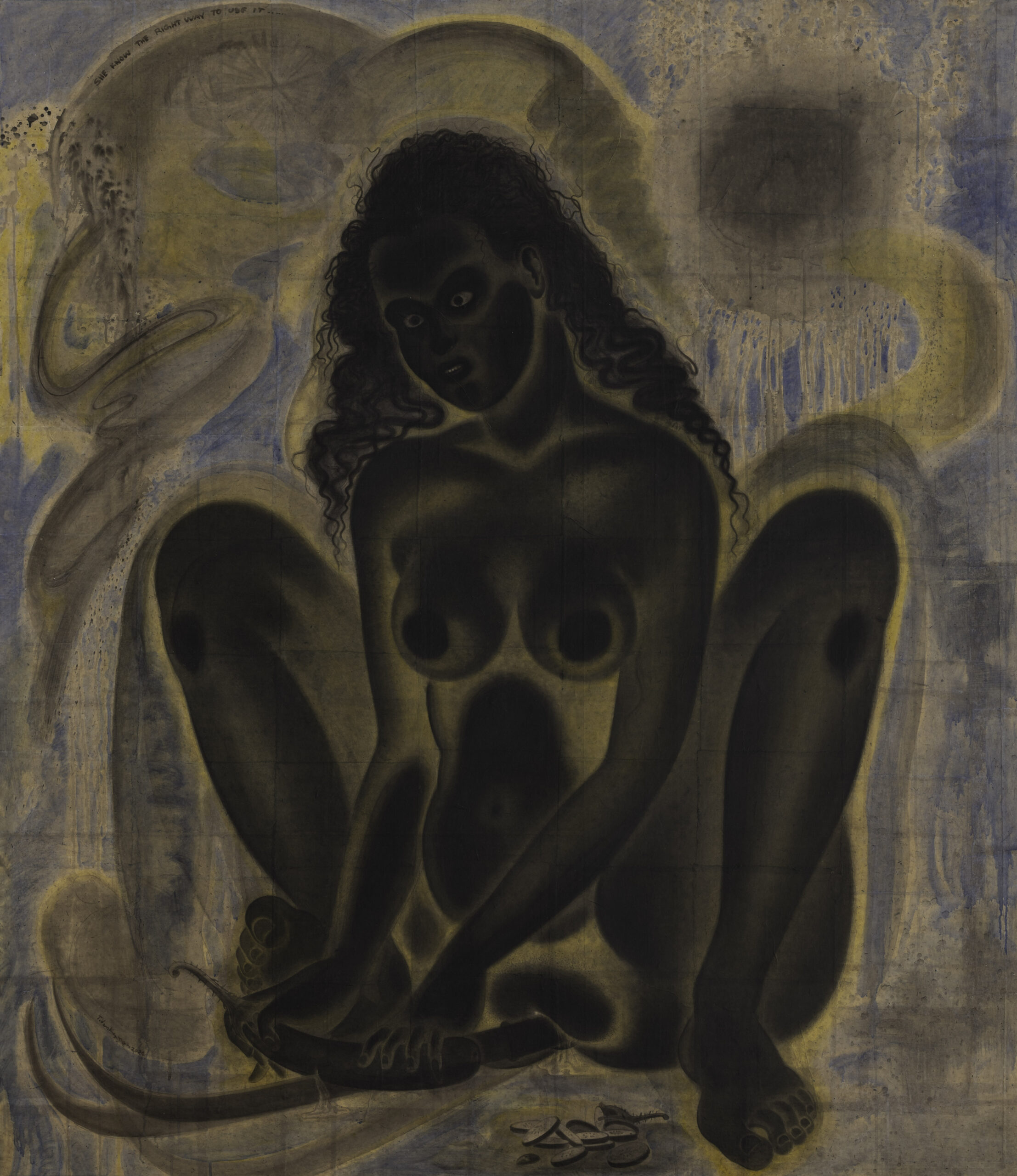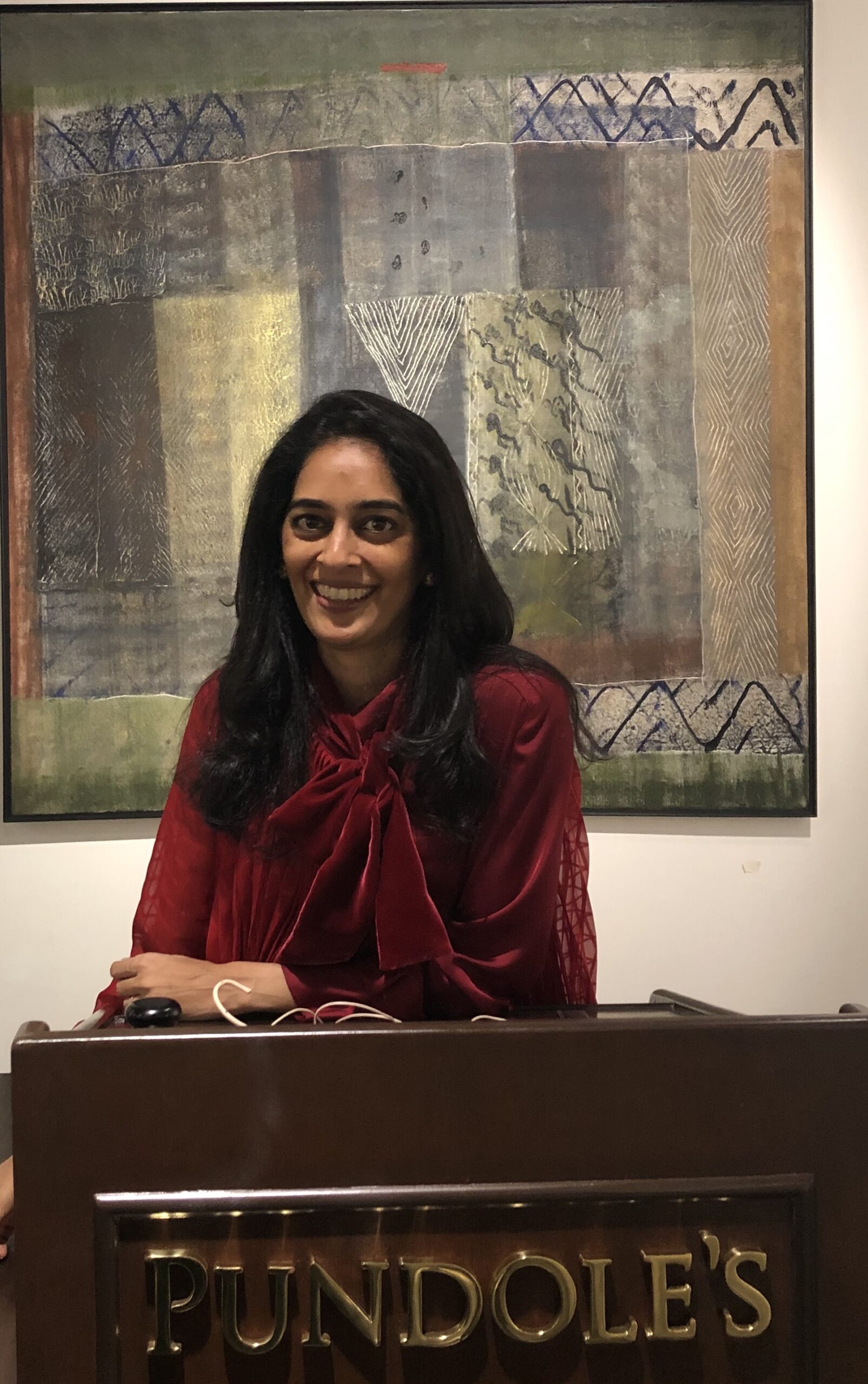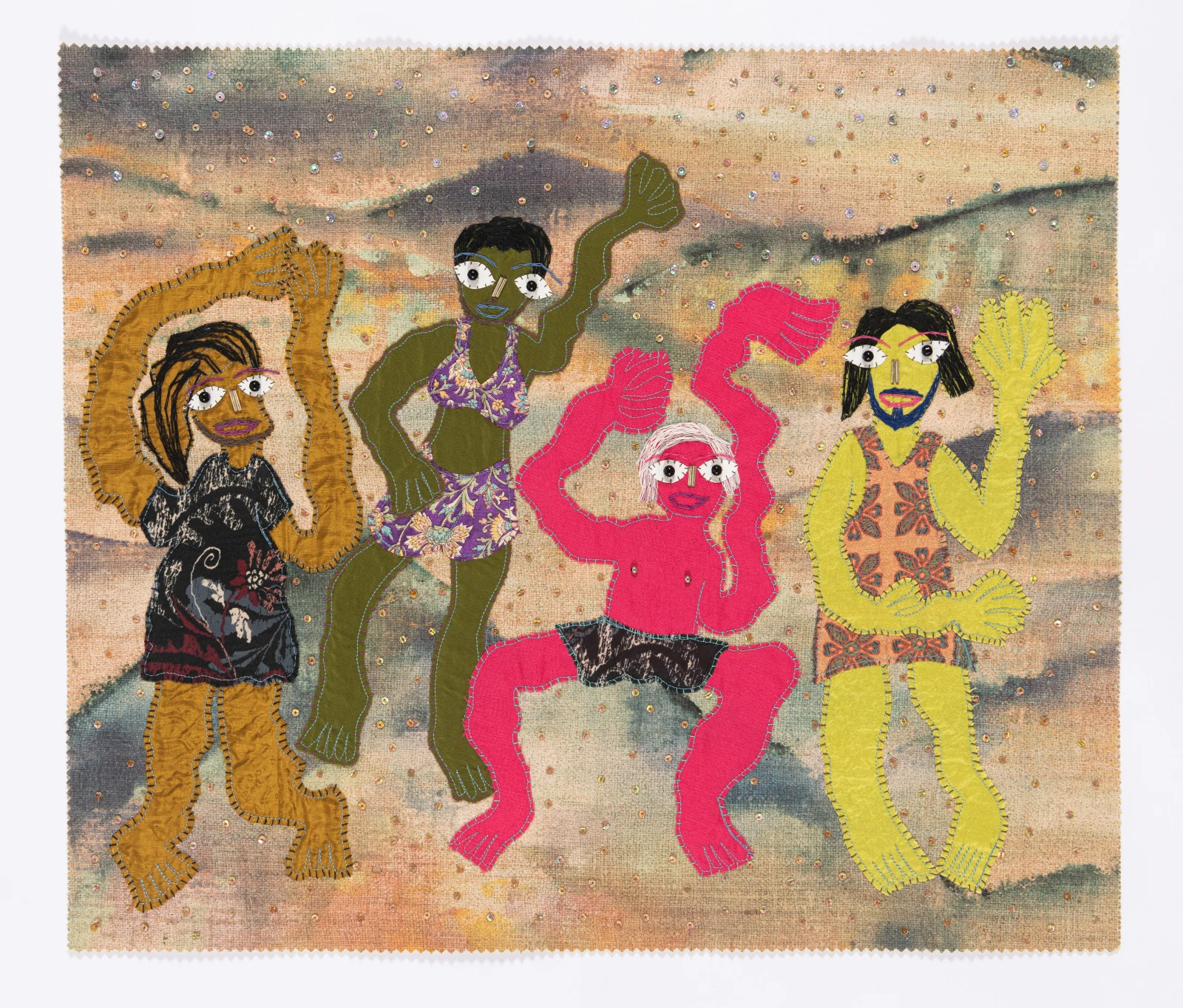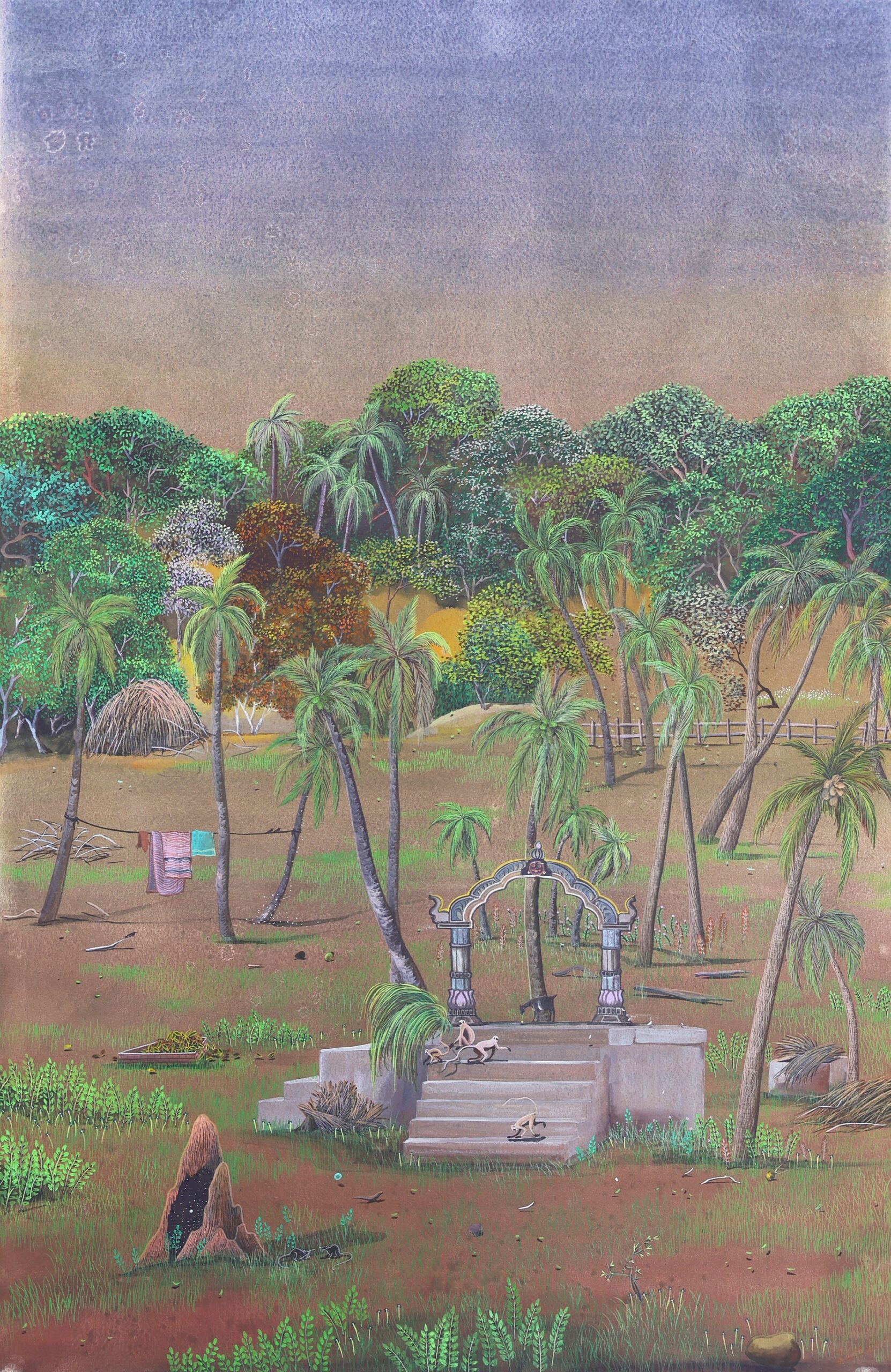Telangana-born artist T. Venkanna has long explored the intersections of mythology, history, and western medieval art in his work. Drawing inspiration from diverse sources such as European painting, Indian miniatures, and his own life experiences, Venkanna weaves a visual language that interrogates social norms, censorship, and the politics of desire. In a conversation with the artist, we discussed how the grotesque, the erotic, and the subversive converge in his work to create a provocative dialogue on power and repression.
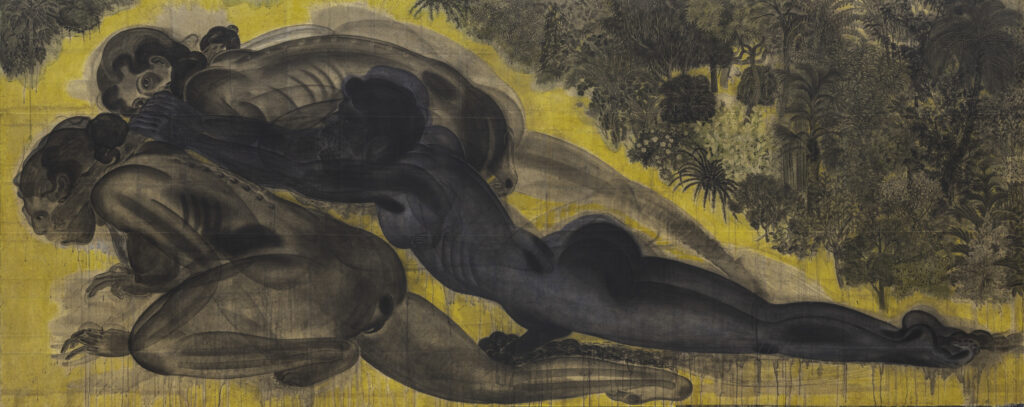
T. Venkanna, Last Human, 2024, Ink on rice paper affixed on canvas. Collection of Kiran Nadar Museum of Art, New Delhi, India. Image courtesy of Gallery Maskara.
“Life is much more obscene than art,” he states, and rightly so. In a world where violence, inequality, and exploitation saturate our lived realities, the discomfort we feel in front of explicit images often says more about our own anxieties than the work itself.
He argues that those who engage with his art with sensitivity and understanding will uncover layers of meaning beyond surface provocation. His work does not seek mere titillation. “That is one click away and too easily accessible everywhere by everyone,” he says. Instead, his artistic practice examines how sexuality is not just an intimate act but also a mechanism of control, a site of both pleasure and power. “My works look at the relationship between sexual acts and how it manifests in society, how it is often used as a tool for violence as well as for social control.” His treatment of the sexual act itself calls for a transformation of the gaze. The exposed genitals and orifices in his works become more than sites of desire. They become portals of introspection.
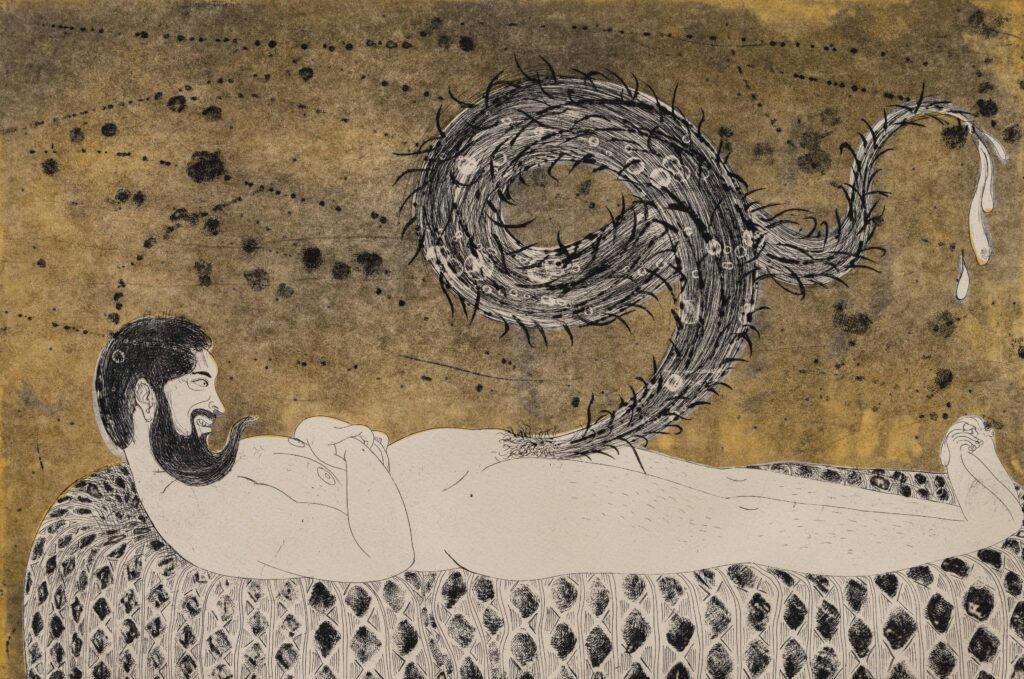
T. Venkanna, Day-Dream, 2023, Coloured etching. Image courtesy of Gallery Maskara.
His 2025 exhibition Black Blue Yellow delves into these ideas, positioning sex not only as an expression of love but as a deeply political act—one that has been shaped, regulated, and weaponized by institutions throughout history. This body of work followed Looking for Peace (2016/17), where he confronted the consequences of war and violence, extending his critical gaze beyond human suffering to include the destruction of non-human life. If Looking for Peace dissects violence as a result of conflict, then Black Blue Yellow interrogates another force that governs our existence—desire.

T. Venkanna, Fountain of Love (quadryptich), 2018, Oil on canvas. Image courtesy of Gallery Maskara.
For Venkanna, the human body—often depicted naked and in ambiguous states of power—becomes both a site of resistance and transformation. “Erotic art is an integral part of Indian cultural heritage, and my works continue that rich and varied tradition,” he says. Yet, contemporary society remains uneasy about sexual representation. “Sometimes people assume that what is explicit must also be obscene. As if seeing a drawing or a painting of a nude person can somehow corrupt the viewer.” His works push against this inherited shame, exposing the hypocrisy that allows violence to proliferate in public life while suppressing expressions of love and intimacy.
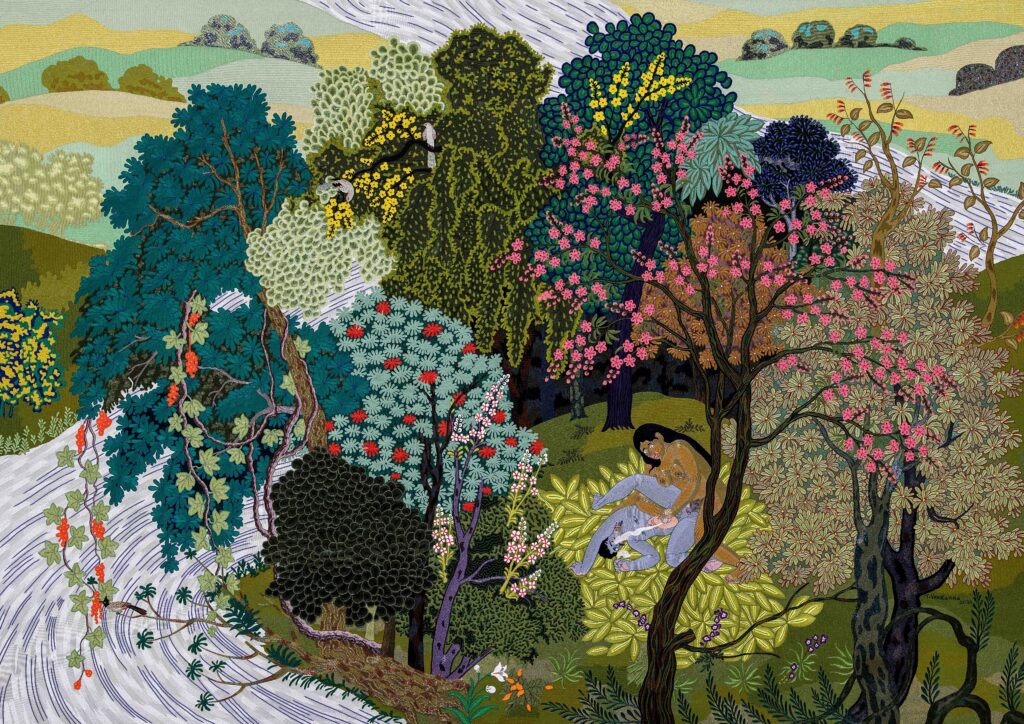
T. Venkanna, Same but Not the Same, 2022, Pencil and hand embroidery on linen. Image courtesy of Gallery Maskara.
Gender also plays a crucial role in his practice. In works like Evolution, he positions a pregnant intersex body in the foreground while Adam and Eve appear in the background, subtly challenging the dominance of heteronormative narratives. “Perhaps it is a response to the misunderstanding around gender and inequality that we see around us,” he explains. In a society where rigid binaries continue to dictate norms, his work suggests that gender is a spectrum. His compositions disrupt the traditional gaze, urging viewers to reconsider preconceived notions of identity, power, and autonomy.
“In other works, I turn patriarchy on its head by giving women power and control over their bodies and, by extension, over their lives.”
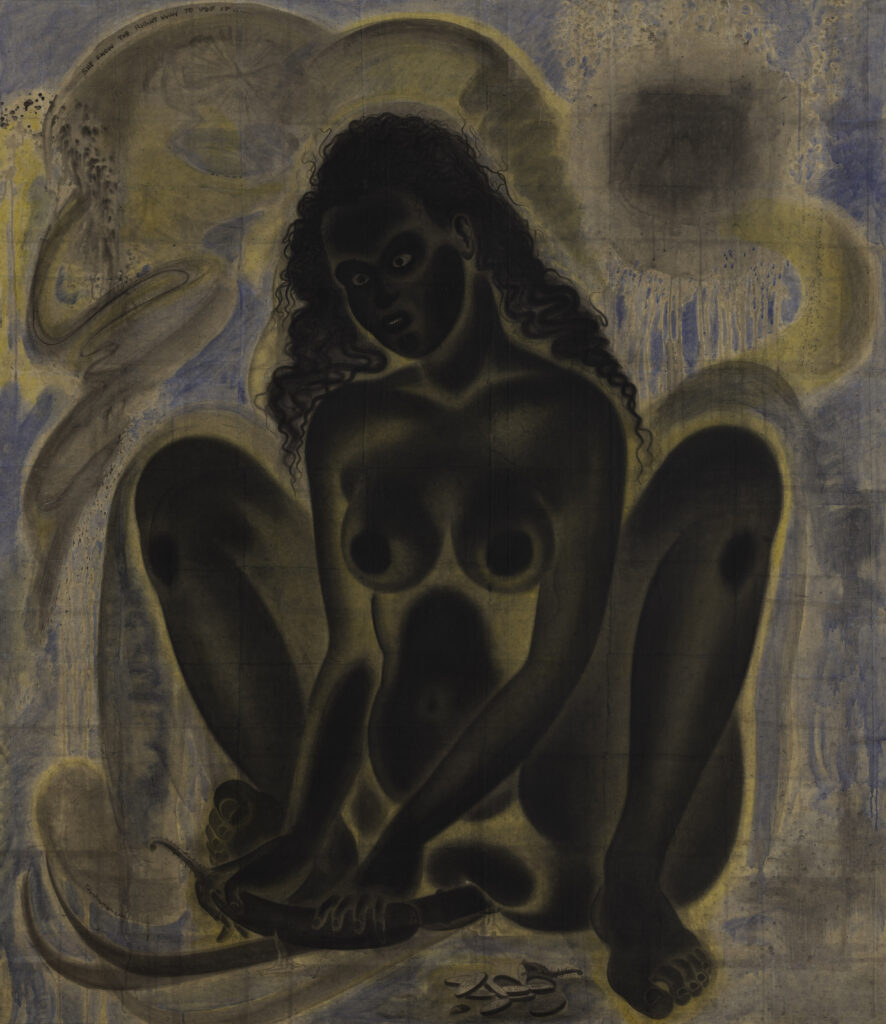
T. Venkanna, She Know’s the Right Way to Use It, 2024, Ink on rice paper affixed on canvas. Image courtesy of Gallery Maskara.
His exploration of sexuality goes beyond representation—it demands a shift in perspective. The gaze, traditionally controlled by structures of power, is confronted in his work.
“Each one arrives at works of art with their sensibility and sensitivity. Perhaps people see their weaknesses in some of my works as they speak to our inexpressible deeds and desires.”
This confrontation is not comfortable, nor is it meant to be. By removing rationality from the equation and allowing instinct, spontaneity, and raw emotion to emerge, he forces viewers to reckon with their own inhibitions.

T. Venkanna, Shit, 2023, Coloured etching. Image courtesy of Gallery Maskara.
Looking ahead, Venkanna is beginning a new body of work in oils and tempera, continuing his investigations into sex, power, and society. With Black Blue Yellow marking the second part of a trilogy that began with Looking for Peace, the question remains—where will Part Three take us?
